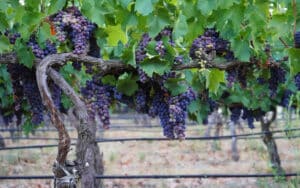Venturing into the heart of Rock Hill’s wine country – Loomis, CA, one is taken by the stunning beauty and diversity of the region’s vineyards.
The landscape, characterized by rolling hills blanketed in verdant vines, serves as a testament to the area’s rich viticultural heritage.
This expedition offers an immersive exploration into this captivating world of winemaking – from understanding the intricacies involved in grape cultivation and harvesting to discovering the myriad processes that transform these humble fruits into exceptional wines.
Rock Hill’s vineyards present a diverse palette of grape varieties, each with its distinct characteristics.
These range from classic varietals renowned for their role in producing exquisite wines to less known kinds that contribute unique nuances to blends.
The variety and versatility of these grapes underline their pivotal role in crafting distinctive wines that express Rock Hill’s terroir – a product of its unique climate, soil composition, and cultivation practices.
This journey delves deep into understanding how every step – from selecting appropriate varietals for specific microclimates within Rock Hill to harnessing fermentation sciences – culminates into creating vibrant bottles cherished globally.

Understanding Winemaking Processes
The intricate process of winemaking commences with grape cultivation and meticulously extends through fermentation, aging, and bottling, underscoring the sheer importance of each step in producing high-quality wine.
The initial stage involves selecting the appropriate vineyard site, considering factors such as soil type, climate conditions, and sun exposure. This selection influences not only grape quality but also varietal characteristics, as certain grape varieties thrive better than others under specific conditions. The artful practice of viticulture—the cultivation and harvesting of grapes—lays the groundwork for the entire winemaking process.
The subsequent stages are characterized by a series of deliberate actions that transform harvested grapes into wine. Fermentation is a critical phase where sugars in the grape juice are converted into alcohol by yeast—a biological process resulting in wine’s alcoholic content.
Following fermentation is aging—an optional but often employed step aimed at enhancing flavor profiles and mellowing out harsher aspects of the wine. The duration and method used for aging greatly affect a wine’s taste and complexity; wines aged in oak barrels tend to have distinct flavors like vanilla or toast which are absent in stainless steel-aged counterparts.
With an understanding of this intricate procedure comes an appreciation for every glass poured—a reflection not merely of fermented fruit but rather an embodiment of time-honored traditions stemming from generations past along with environmental factors uniquely tied to its place of origin.
Embracing this deep-seated knowledge fosters feelings akin to being part of something larger than oneself—a collective experience steeped in culture and history that transcends geographical boundaries. Thus unfolds the narrative that transforms simple grape tasting on Rock Hill’s vineyards into an enlightening expedition stirring a sense of belonging within each participant.
Exploring Diverse Grape Varieties
Exploration of the diverse grape varieties is akin to diving into a sea of flavors and aromas, each with unique characteristics that contribute to the richness and complexity of wines. The variety of grapes grown in Rock Hill’s vineyards – Loomis, CA, is not only impressive but also instrumental in defining the region’s wine identity.
These grapes range from international varieties such as Cabernet Sauvignon, Pinot Noir, and Chardonnay to indigenous types like Norton and Scuppernong. Each grape type brings a distinct flavor profile and aroma, contributing significantly towards creating wines with varying degrees of complexity.
- Cabernet Sauvignon: Known for its tannic structure and dark fruit notes.
- Pinot Noir: Noted for its light body, high acidity, and red fruit flavors.
- Chardonna: Popular for its versatility with bold tropical fruit flavors when grown in warmer climates or lean mineral character when cultivated in cooler regions.
- Norton: Indigenous to America, it produces richly colored wines with robust flavors.
- Scuppernong: An American native grape famous for making sweet white wines.
The varietal diversity at Rock Hill vineyards fuels an exciting exploration journey through wine tasting experiences. As one navigates through this beautiful maze of grape varieties, they will discover how different combinations create a myriad of wine styles – from crisp whites to velvety reds. This vast selection caters to various palates thus creating a sense of inclusivity among wine enthusiasts.
Beyond just savoring the end product – wine; understanding the underlying grape types deepens appreciation for winemaking craftsmanship while fostering a stronger connection between people sharing this common interest.
This voyage across Rock Hill’s vineyard landscape illuminates how intricate factors like soil type, climate conditions, cultivation practices converge perfectly to birth these diverse grape varieties that define distinct regional identities. Unveiling these complexities offers an enriching perspective on how every bottle tells a story about its origin – connecting us all back to nature’s bounty amid our shared love for fine wines.
It emphasizes that more than just being consumers or mere spectators; we are all partakers in this beautiful dance between nature’s bounty and human ingenuity that paints our glasses with delightful hues of fermented bliss!

